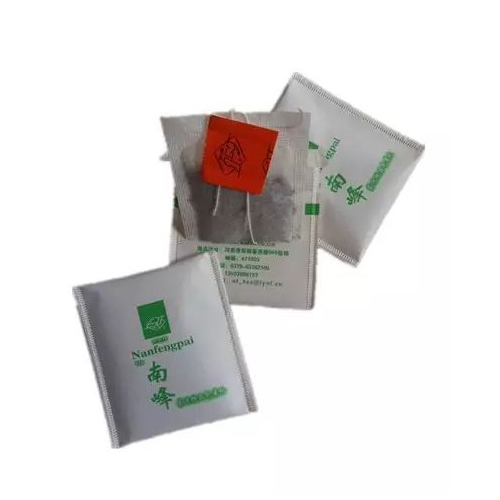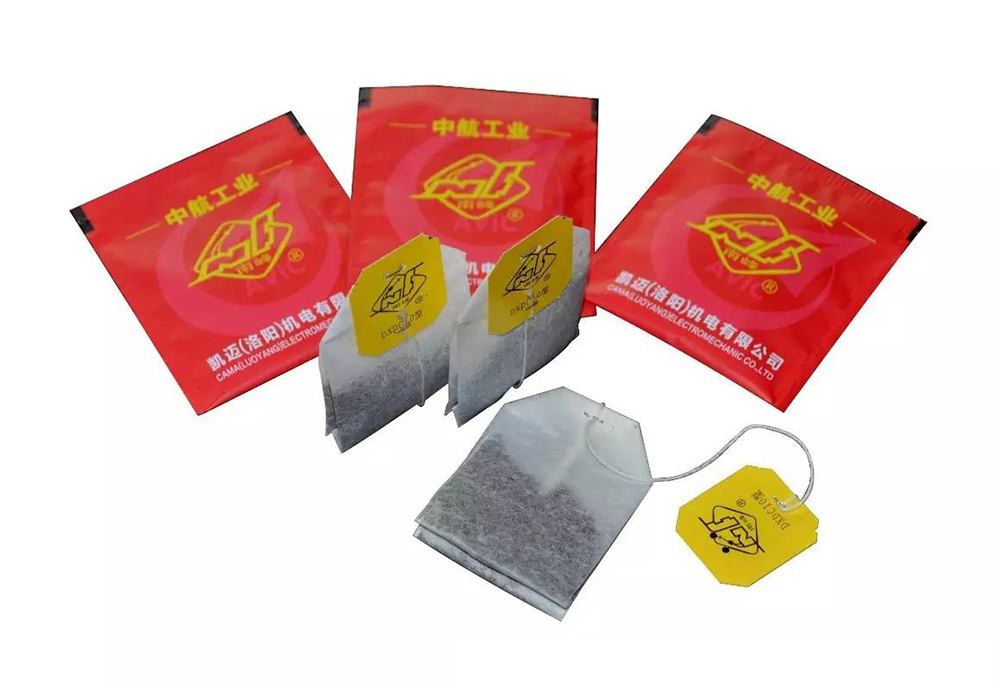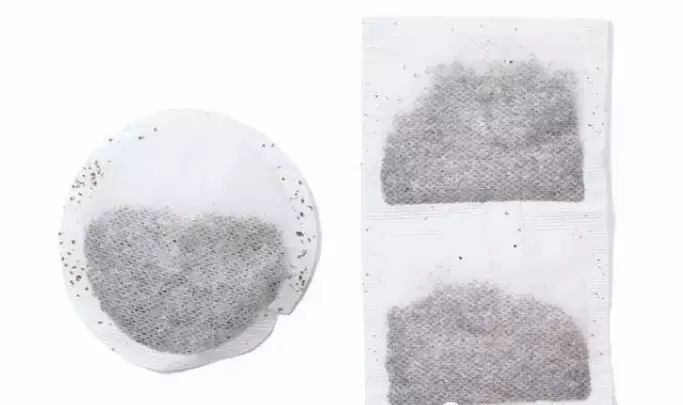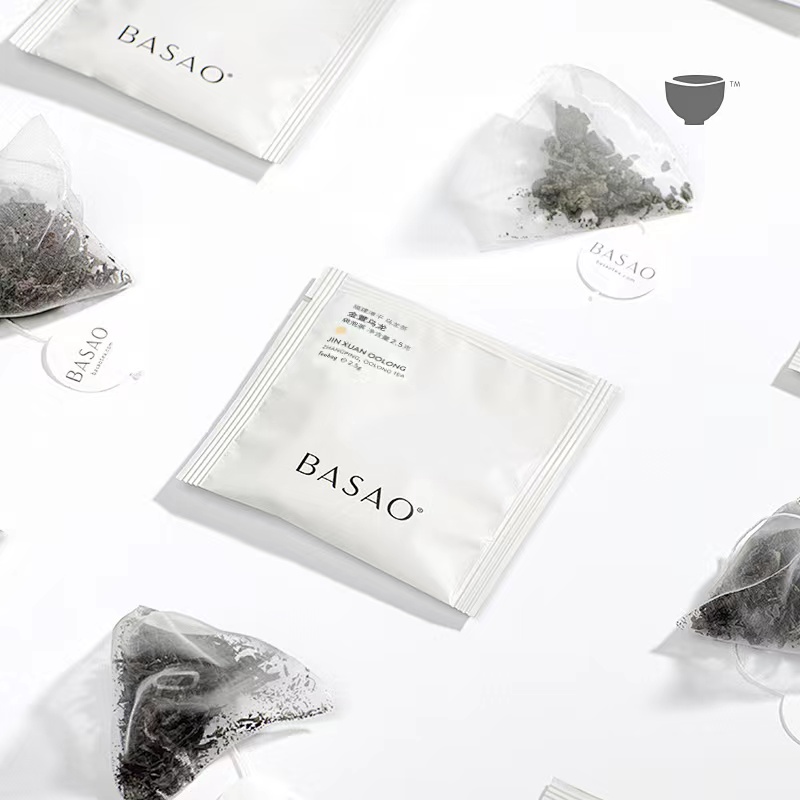As one of the world’s three major non-alcoholic beverages, tea is highly favored by people for its natural, nutritious, and health promoting qualities. In order to effectively preserve the shape, color, aroma, and taste of tea, and achieve long-term storage and transportation, the packaging of tea has also undergone multiple reforms and innovations. Since its inception, bagged tea has been popular in European and American countries due to its many advantages such as convenience and hygiene.
Bagged tea is a type of tea that is packaged in thin filter paper bags and placed together with the paper bag inside the tea set. The main purpose of packaging with filter paper bags is to improve the leaching rate and also to fully utilize the tea powder in the tea factory. Due to its advantages such as fast brewing, cleanliness, standardized dosage, easy mixing, convenient residue removal, and portability, bagged tea is highly favored in the international market to meet the fast-paced lifestyle needs of modern people. Tea raw materials, packaging materials, and tea bag packaging machines are the three elements of tea bag production, and packaging materials are the basic conditions for tea bag production.
Types and requirements of packaging materials for tea bags
The packaging materials for tea bags include inner packaging materials such as tea filter paper, outer packaging materials such as outer bags, packaging boxes, and transparent plastic and glass paper, among which tea filter paper is the most important core material. In addition, during the entire packaging process of tea bags, tea bag cotton thread for thread lifting, label paper, adhesive thread lifting, and acetate polyester adhesive for labels are also required. Tea mainly contains components such as ascorbic acid, tannic acid, polyphenolic compounds, catechins, fats, and carotenoids. These ingredients are highly susceptible to deterioration due to moisture, oxygen, temperature, light, and environmental odors. Therefore, the packaging materials used for tea bags should generally meet the requirements of moisture resistance, oxygen resistance, high temperature resistance, light shielding, and gas blocking to reduce or prevent the influence of the above factors.
1. Inner packaging material for tea bags – tea filter paper
Tea bag filter paper, also known as tea bag packaging paper, is a low weight thin paper with a uniform, clean, loose and porous structure, low tightness, strong absorption, and high wet strength. It is mainly used for the production and packaging of “tea bags” in automatic tea packaging machines. It is named after its purpose, and its performance and quality play a crucial role in the quality of finished tea bags.
1.2 Basic requirements for tea filter paper
As a packaging material for tea bags, tea filter paper should not only ensure that the effective ingredients of the tea can quickly diffuse into the tea soup during the brewing process, but also prevent the tea powder in the bag from seeping into the tea soup. The specific requirements for its characteristics are as follows.
(l) Has sufficient mechanical strength (high tensile strength) to adapt to the dry strength and elasticity of automatic packaging machines for tea bags;
(2) Capable of withstanding immersion in boiling water without breaking;
(3) Bagged tea has the characteristics of being porous, moist, and permeable. After brewing, it can be quickly wetted and the soluble contents of the tea can be leached out quickly;
(4) The fibers should be fine, uniform and consistent.
The thickness of filter paper is generally 0.003-0.009in (lin=0.0254m)
The pore size of the filter paper should be between 20-200 μ m, and the density and porosity of the filter paper should be balanced.
(5) Odorless, odorless, non-toxic, in compliance with hygiene requirements;
(6) Lightweight, with white paper.
1.3 Types of Tea Filter Paper
The packaging materials for tea bags in the world today are divided into two types: heat sealed tea filter paper and non heat sealed tea filter paper, depending on whether they need to be heated and bonded during bag sealing. The most commonly used currently is heat sealed tea filter paper.
Heat sealed tea filter paper is a type of tea filter paper suitable for packaging in heat sealed tea automatic packaging machines. It is required to be composed of 30% -50% long fibers and 25% -60% heat sealed fibers. The function of long fibers is to provide sufficient mechanical strength to filter paper. Heat sealed fibers are mixed with other fibers during the production of filter paper, allowing the two layers of filter paper to bond together when heated and pressurized by the packaging machine’s heat sealing rollers, thus forming a heat sealed bag. This type of fiber with heat sealing properties can be made from copolymers of polyvinyl acetate and polyvinyl chloride, or from polypropylene, polyethylene, synthetic silk, and their mixtures. Some manufacturers also make this type of filter paper into a double-layer structure, with one layer consisting entirely of heat sealed mixed fibers and the other layer consisting of non heat sealed fibers. The advantage of this method is that it can prevent the heat sealed fibers from adhering to the sealing rollers of the machine after being melted by heat. The paper thickness is determined according to the standard of 17g/m2.
Non heat sealed filter paper is a tea filter paper suitable for packaging in non heat sealed tea automatic packaging machines. Non heat sealed tea filter paper is required to contain 30% -50% long fibers, such as Manila hemp, to provide sufficient mechanical strength, while the rest is composed of cheaper short fibers and about 5% resin. The function of resin is to improve the ability of filter paper to withstand boiling water brewing. Its thickness is generally determined based on a standard weight of 12 grams per square meter. Researchers from the Department of Forest Resources Science at Shizuoka Agricultural University in Japan used Chinese made hemp bast fiber soaked in water as raw material, and studied the properties of hemp bast fiber pulp produced by three different cooking methods: alkaline alkali (AQ) pulping, sulfate pulping, and atmospheric alkaline pulping. It is expected that the atmospheric alkaline pulping of hemp bast fiber can replace Manila hemp pulp in the production of tea filter paper.
In addition, there are two types of tea filter paper: bleached and unbleached. In the past, chloride bleaching technology was used, but currently, oxygen bleaching or bleached pulp is mostly used to produce tea filter paper.
In China, mulberry bark fibers are often made by high free state pulping and then processed with resin. In recent years, Chinese researchers have explored various pulping methods based on the different cutting, swelling, and fine fiber effects of fibers during pulping, and found that the best pulping method for making tea bag paper pulp is “long fiber free pulping”. This beating method mainly relies on thinning, cutting appropriately, and trying to maintain the length of the fibers without requiring excessive fine fibers. The characteristics of paper are good absorption and high breathability. Due to the long fibers, the uniformity of the paper is poor, the surface of the paper is not very smooth, the opacity is high, it has good tear strength and durability, the size stability of the paper is good, and the deformation is small.
Post time: Jul-29-2024









